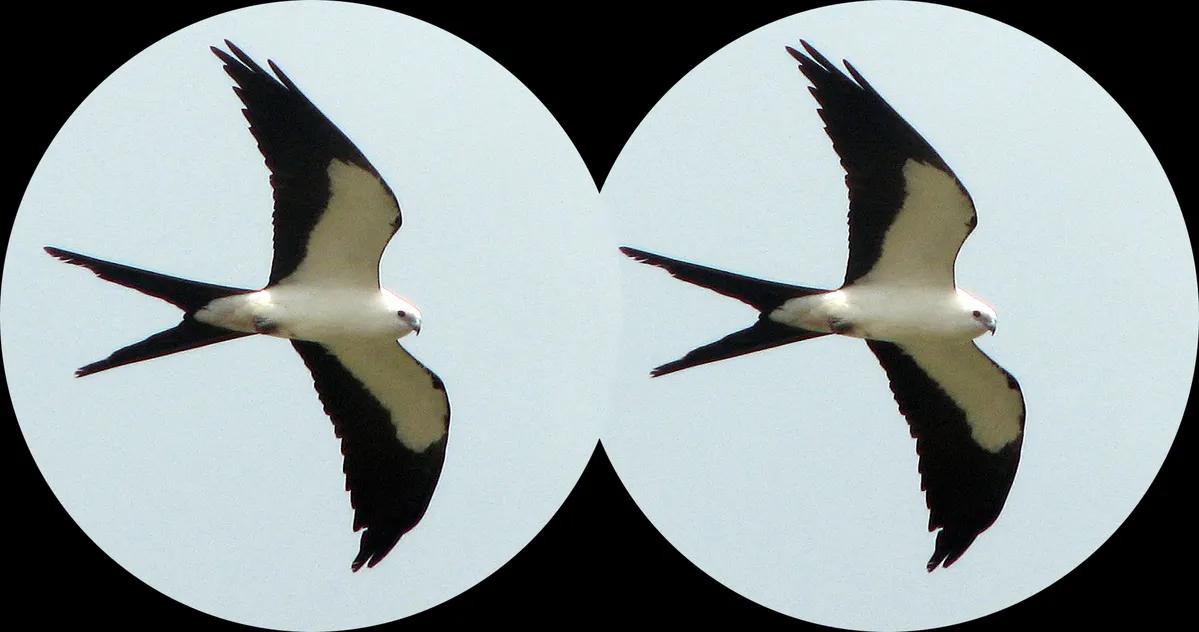Copyright Bangor Daily News

I’m not sure this is a good idea — technology is advancing so fast, it’s hard to keep up. The latest invention is a pair of binoculars that can identify the birds for you. Swarovski Optik’s new AX Visio binoculars use built-in GPS and image-recognition AI to know where you are and what you’re looking at. It relies on the same photo database that powers Merlin, the bird identification app from the Cornell Lab of Ornithology. Supposedly, these new binoculars can identify 9000 bird species with reasonable, though not perfect, accuracy. Of course, the identification is only as good as the photos in the Cornell database and the algorithms in its recognition software. Many local birders now use Merlin to help identify bird vocalizations. My estimate is that Merlin correctly identifies bird songs and call notes about 90% of the time. Swarovski’s new binoculars are pricey. It’ll cost you over $5000 to identify a bird in your backyard. I’ll come over to your house and do it for half that price. It was only a matter of time before AI found its way into binoculars. We already have smart birdhouses and birdfeeders that can watch birds and identify them for you. There’s a new trend in marketing these devices that is slightly annoying. Manufacturers are reaching out to print and social media influencers, asking them to review their products, sometimes in return for a free sample. Since I both write this column and produce YouTube videos, I average about one request a week. One manufacturer wanted me to try their smart bird feeder, which they would provide. I politely informed them that I have bears in my yard. Would their expensive feeder survive a bear attack? They informed me that their smart feeders have a built-in warning system that dissuades smaller pests, such as raccoons. However, they confided that bears would shred their technology in seconds. They thanked me for replying and went on their merry way, never to be heard from again. Beyond all this backyard technology, scientific advances are making a difference on the landscape, too. Last week, I heard from the University of Missouri. They thought readers would like to know about university researchers using drones and artificial intelligence to monitor migratory water birds more safely and accurately. Historically, this monitoring is done by airplane. But flights are expensive, observers can’t get too close and the planes often spook the birds. Using drone imagery and AI-powered analysis, biologists get a better count — up to 95% accuracy. AI can even organize and summarize the data for faster human evaluation. BirdCast has been around for a while. It combines radar data with weather forecasts to predict migration waves. Collision with skyscrapers is one of the biggest threats to birds during nocturnal flights, as many are attracted to the light. Dimming the lights on tall buildings reduces mortality, and AI connected to BirdCast could do this automatically in migratory flyways. It could also power-down wind turbines. The potential dark side of advancing technology is that new birders may let the AI do all the learning, and fail to develop their own skills. For many people, that’s just fine. They mostly enjoy learning what birds are around them and appreciating their company. With modern tools, they don’t really need to sharpen their personal identification skills. More advanced birders are aghast at this notion. Human expertise still outperforms AI in most cases, and becoming dependent on technology is repugnant to many. For those who enjoy seeing and hearing birds in nature without distractions, using AI tools would feel like birding with an MP3 player and earbuds on. There’s room for both views. People can enjoy watching baseball without playing baseball. People who don’t play golf can enjoy watching golf. Um, no — they can’t. I don’t know any non-golfer who would watch golf on TV, ever. Ultimately, AI can only do so much. It can recognize most species by sight and sound, most of the time. But skilled birders use many more clues than just those two. A bird’s location, habitat and behaviors yield clues that are difficult to describe within a machine-learning algorithm. For example, on I-95 this week I saw a large raptor circling, approximately half a mile away. Its wings were straight out from the body, not V-shaped like a turkey vulture. Its circles were tight, but not as tight as a red-tailed hawk. It could only be a bald eagle. I was correct. Let’s see AI do that.



